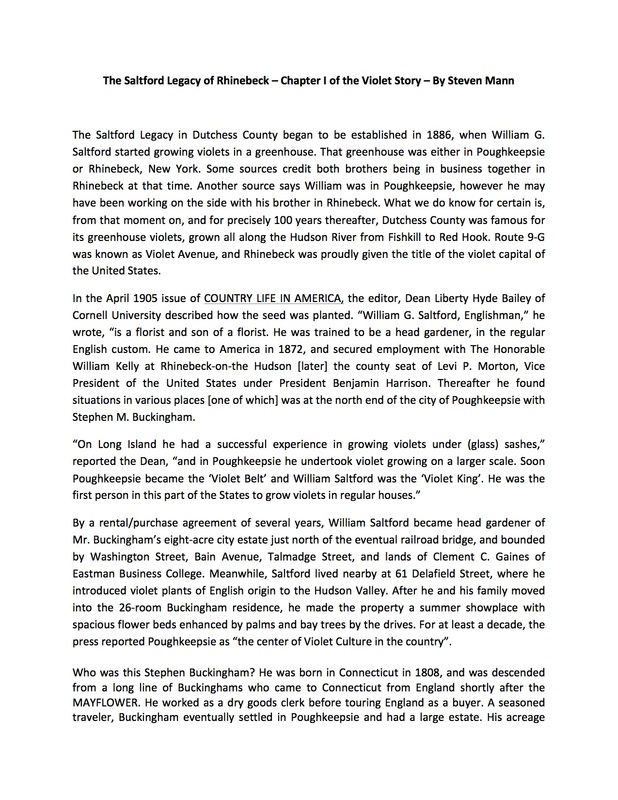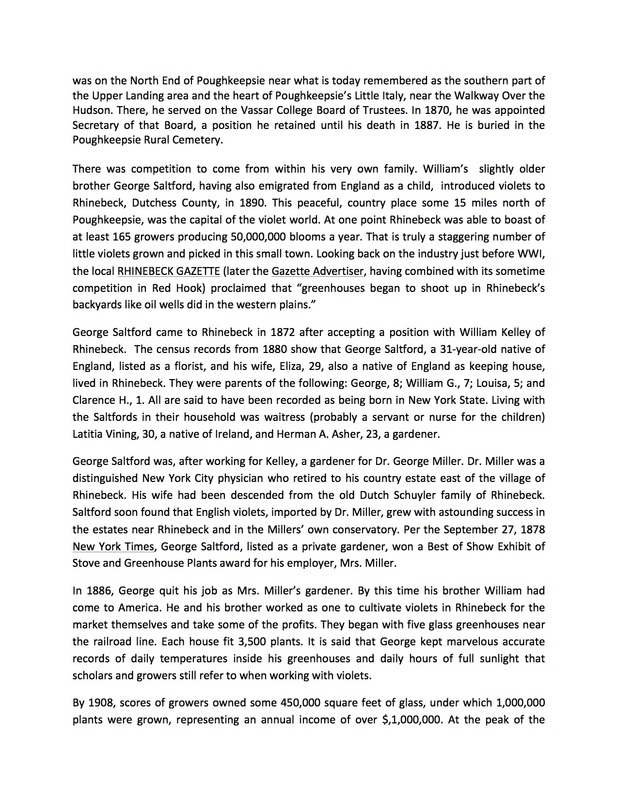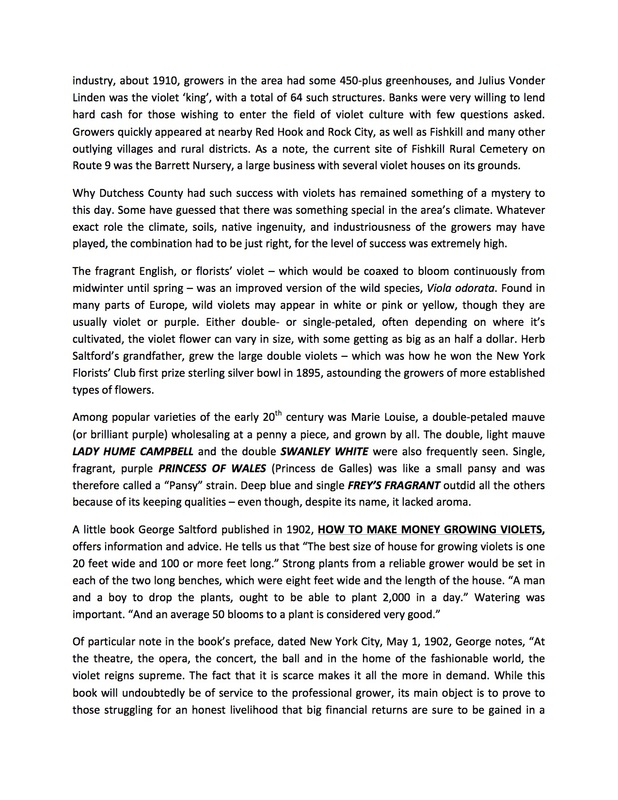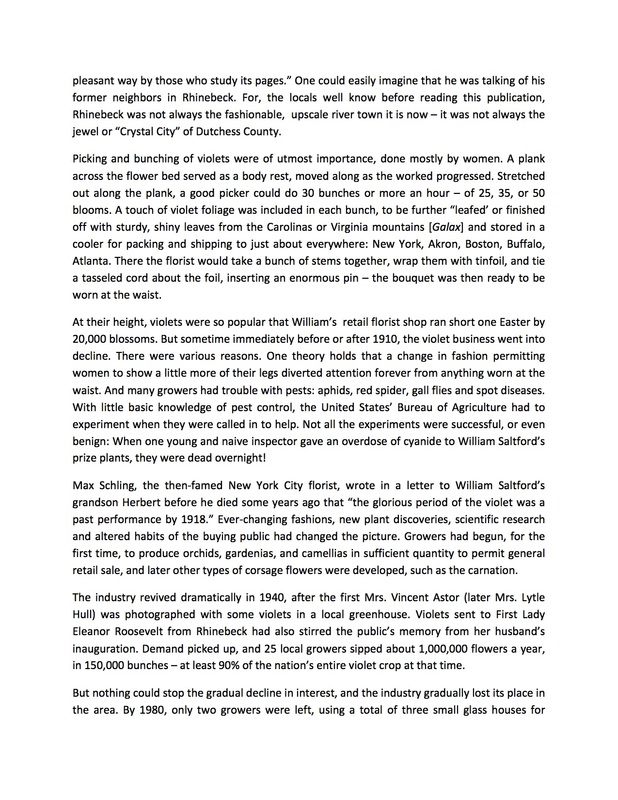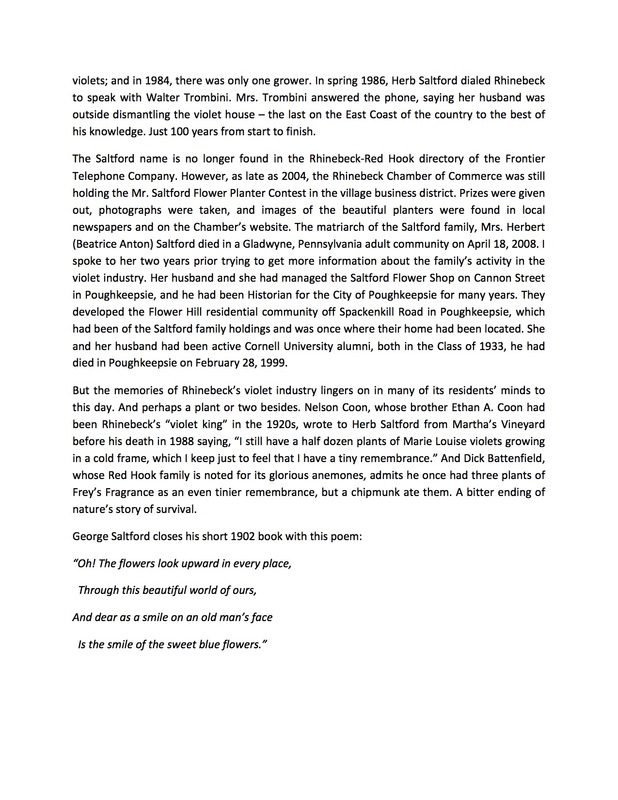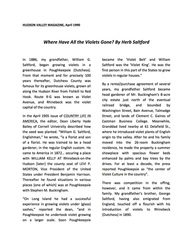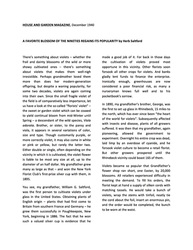Town of Rhinebeck Cemetery
In 1835, Catherine Livingston Garrettson deeded to the Methodist Episcopal Church of Rhinebeck a half-acre for burial purposes on the condition that trustees “surround it with a good fence and permit no more interments in the ground attached to the church.” The land, south and east of the Landsman Kill, a few feet from Post Road, would be the first in a series of land donations made to the Methodist Episcopal Church, Reformed (Dutch) Church, and the Church of the Messiah for future burials outside the village center.
Garrettson’s donation was made at a time when municipalities, burdened by the problems of church burial overcrowding, began banning burial within municipal settings. Rhinebeck was no different in following this trend. From 1843-1858 Rhinebeck limited and then prohibited burials in church plots inside village parameters. Garrettson’s donation was also made on the cusp of the Rural Cemetery Movement in the U.S., a style of burial which sought to secularize cemeteries by resituating the interment of the dead outside of town centers, away from church yards, and squarely within the heart of nature. This change in funerary expression seemed to take root in one of Rhinebeck’s “prominent and public-spirited citizen(s),” Henry DeLamater, who is credited as the organizer behind the development of what would ultimately become the Rhinebeck Cemetery. Setting his sights on a piece of land on “the post road south of Landsman Kill and overlooking it,” Delamater “devoted much time and considerable means to the undertaking.” Over the next three decades additional adjacent lands were acquired from various landowners, including one from Catherine Garrettson’s daughter, Mary Garrettson in 1853 – a ½ acre parcel for burial of “people of color.” These puzzle pieces would ultimately come to make up much of what is now the “Old” section of the Town of Rhinebeck Cemetery. From these lands, in 1883, the Rhinebeck Cemetery Association was formed. In 1913, the Baptist Cemetery was moved from Montgomery Street in the village of Rhinebeck to Section B of the Association Cemetery. With additional lands acquired between 1921 and 1974, the landmass of the "Old" Section of the Association Cemetery came to total 20.2 acres. In 1973,17.4 acres, from the nearby Grasmere Estate, was transferred to the Association by Allan Ryan and Lee Leachman. Located just southeast of the “Old” cemetery on Mill Road, this new section is known as “Grasmere.” Burial began on this land in 1986. The Rhinebeck Cemetery Association disbanded in 2002 and the cemetery was turned over to the Town of Rhinebeck. The Town now operates and cares for the cemetery. In 2013 the cemetery established a Natural Burial Ground adjacent to “Grasmere.” Plot purchasers may now choose between conventional or natural burial. All sections are non-sectarian. Kerk Hof Cemetery
Overlooking the Hudson River on the first patent in Rhinebeck (Lot 6), lies the Kerk Hof Cemetery, often also referred to as the Van Wagenen Family Cemetery. An inventory made in 1885 by Henry R. Van Vliet details twenty-two inscriptions, the oldest dating to 1717. Though only a handful of monuments survive today, Kerk Hof remains one of the oldest cemeteries in the county. It is closed to new burials.
|
Howard Holdridge Morse, 1908 (from) Historic Old Rhinebeck “It is a lovely spot for a cemetery, well located, amid rural surroundings, and easily accessible. It makes an idealistic resting place for the dead, certain never to be wantonly disturbed by the hand of man or otherwise diverted from the sacred use to which it is now consecrated. Its knolls command long stretches of charming scenery. Its dells are alluring. The Landsman’s kill, a rippling stream, runs merrily below it. The site is admirable. Over one thousand dead are resting there. It is the Mecca of many a pilgrimage. Thousands of dollars have been expended in memorial work and beautifying the grounds. Good taste is everywhere apparent. Time will by natural law add to its attractiveness. Death is stripped of many of its pangs when it brings all that is mortal to rest amid such surrounding. The noise, bustle and confusion incident to city life, with possible disturbance or encroachment to meet the demands of a metropolis with its great population are not to be feared.“ "Our Cemetery"
From Rhinebeck the Beautiful, 1897
by J. T. Hammick Ah! yon silent city, where our dead sleep, and rest! Undisturbed, peaceful resting, in that sleep Jesus blessed! Where the monuments stand pointing up toward heaven, To yonder fair mansion, to the purified given In this city, all sleeping, no sorrow, no care, All moulder to dust, who e’er enter there; In this beautiful city here resting so long, None ever returns e’en though friends pleading strong. They heed not our tears nor listen to our sighs, In sweet peaceful slumber their decaying frame lies; On their mounds, blooming flowers we place at their head Here in this lone city where sleep our loved dead. There beautiful grounds almost rival “Greenwood,” These walks lined with trees, flowers, bright green looking good, As we walk through this city, sad tears we oft shed As we ponder, and muse o’er these scenes of the dead. But where is our monument for our brave soldiers dead! Those who fought so bravely, their blood freely shed? Now sleeping in silence, but victories they’ve won Will long be remembered by valiant deeds done. |
People
The Town of Rhinebeck Cemetery, Kerk Hof Cemetery and Kirchhoek Cemetery all boast a rich and diverse memory landscape. While Friends of Rhinebeck Cemetery, Inc. honors the lives and legacies of all those resting at the cemeteries, some well-known interments and/or people who have worked to shape the development of these burial grounds include:
John Armstrong, Jr Alice Astor Pleydell Bouverie Ardon Wheeler Cornwell Arthur Cozine Henry Booth Cowles Cornelius Henry DeLamater Laura Franklin "Polly" Delano Tracy Dows Andrew Frazier Catherine Livingston Garrettson Miss Mary Garrettson Lorena "Hick" Hickok Helen Huntington Hull Levi Parsons Morton Margaret Lynch "Daisy" Suckley Reverend Henry Lafayette Ziegenfuss |
|
Plants & Wildlife
The nearly forty acres that make up these three cemeteries are natural habitats teeming with life and with a variety of coniferous and deciduous trees that give shape to the landscape. In keeping with the Rural Cemetery style, the "old" section of the Town of Rhinebeck Cemetery is host to a range of trees including firs, pines, hemlocks, spruces, beeches, sycamores, maples, oaks, locusts and tulips. The Landsman Kill, on the west side of the cemetery, deepens this peaceful green island of biodiversity with frogs, turtles and salamanders. All three cemeteries function as habitat and playground for coyotes, deer, fox, rabbits, woodchucks, racoons, skunks, squirrels, and chipmunks, as well as nesting sites for a spectrum of birds. The newly established Natural Burial Grounds, once pastureland to the Grasmere Estate, is now a young hardwood forest, home to pines, maples, locusts, oaks, hemlock, tulips, beeches and cherry trees. Maintaining the hardwood forest by way of natural burial lessens soil erosion, creates habitat for bats and other woodland species, and enriches the forest floor.
|
|
Art
The many inscriptions gracing the monuments of these three cemeteries commemorate the legacies of those interred. Collectively, these monuments deepen the memory landscape through art and story in the context of nearly 300 years of shifting funerary expression and changing ideas about death.
|
|
Links
Town of Rhinebeck Cemetery
Find A Grave
Museum of Rhinebeck History
Rhinebeck Historical Society
Consortium of Rhinebeck History
Quitman Resource Center
DAR, Chancellor Livingston Chapter
Dutchess County Historical Society
Wilderstein Historic Site
Starr Library
Green Burial Council
Find A Grave
Museum of Rhinebeck History
Rhinebeck Historical Society
Consortium of Rhinebeck History
Quitman Resource Center
DAR, Chancellor Livingston Chapter
Dutchess County Historical Society
Wilderstein Historic Site
Starr Library
Green Burial Council
Further Research
About 90% of known interments in Rhinebeck Cemetery can be found on Find A Grave. About 75% of the graves have been photographed.
Six other cemeteries that can be checked on Find A Grave for Rhinebeck burials. Rhinebeck Reformed Dutch Church Cemetery; Evangelical Lutheran Church of Saint Peter, AKA Stone Church Cemetery; Wurtemburg Cemetery, German Church Cemetery; Kerk Hof Cemetery; and St Josephs Cemetery in Rhinecliff. The entries for all these cemeteries are incomplete.
Two other great sources for burials in cemeteries in Rhinebeck, NY. Please note that burials after 1999 are not included:
Rhinebeck New York : death records of the 18th and 19th centuries by Arthur C.M. Kelly.
Rhinebeck Association Cemetery : 20th century deaths / transcribed and indexed by Arthur C. M. Kelly.
Six other cemeteries that can be checked on Find A Grave for Rhinebeck burials. Rhinebeck Reformed Dutch Church Cemetery; Evangelical Lutheran Church of Saint Peter, AKA Stone Church Cemetery; Wurtemburg Cemetery, German Church Cemetery; Kerk Hof Cemetery; and St Josephs Cemetery in Rhinecliff. The entries for all these cemeteries are incomplete.
Two other great sources for burials in cemeteries in Rhinebeck, NY. Please note that burials after 1999 are not included:
Rhinebeck New York : death records of the 18th and 19th centuries by Arthur C.M. Kelly.
Rhinebeck Association Cemetery : 20th century deaths / transcribed and indexed by Arthur C. M. Kelly.

